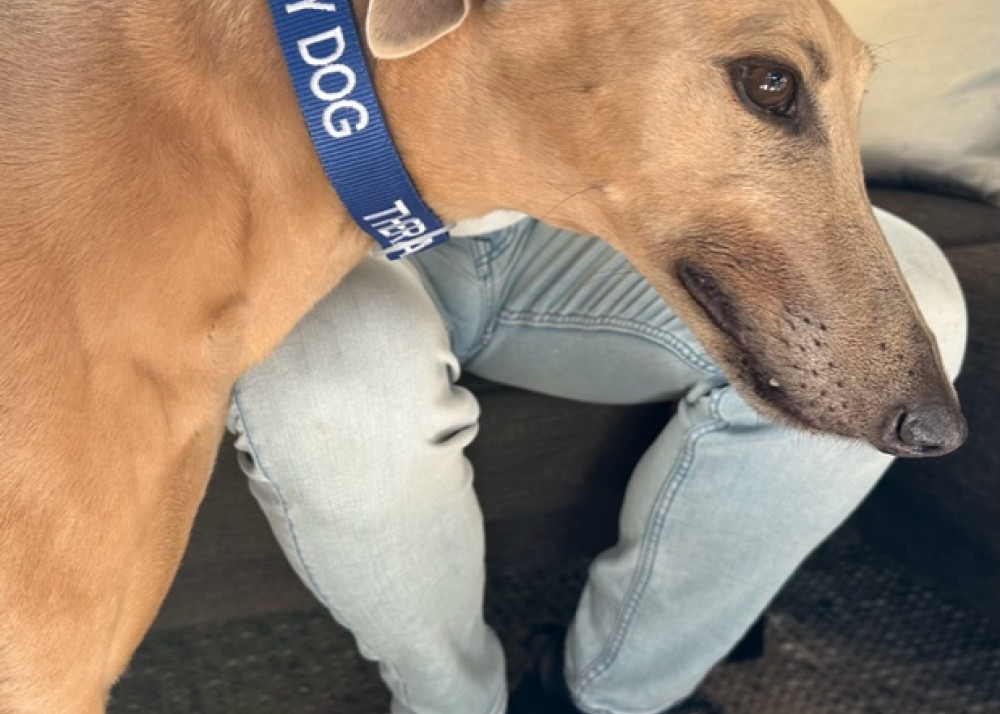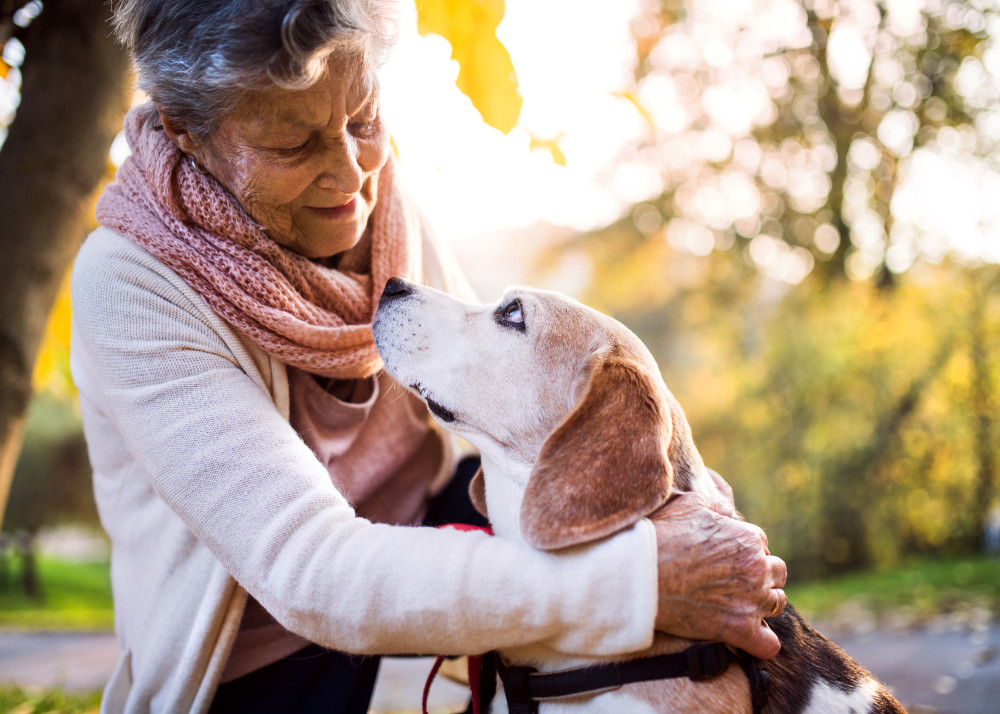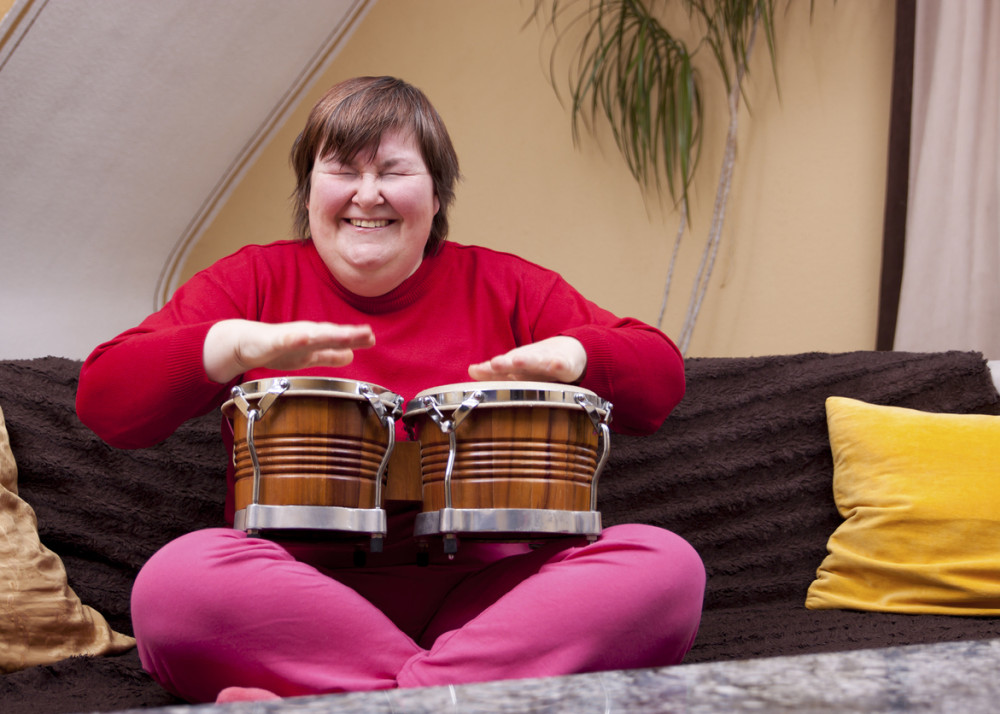How to Get a Therapy Dog
30 April, 2024
If you've ever experienced the benefits of a pet therapy session, or know someone who has, you probably know what a wonderful and beneficial experience it can be. There's also a good chance you've wondered whether you could train your own pet dogs to become therapy animals and provide similar benefits to others in need.
While it's not simple to get your own therapy dog, it is possible. In addition, given the increasing demand for therapy dogs, it's a good time to be learning more about what it takes for a dog to become a therapy animal and what the process involves.
As a result, we decided to use this blog as an opportunity to explore what's involved in selecting, training and using therapy dogs for pet therapy work, in the hope that it might help you move one step closer to having your own therapy animal. That way, you and your dog can provide emotional support and anxiety relief to those who need it.

What is a Therapy Dog?
A therapy dog is a specially trained dog that interacts with individuals in Animal Assisted Therapy (AAT) sessions, to provide comfort, emotional support, and affection. These dogs are typically utilised by healthcare professionals in a range of settings, to help reduce stress and anxiety, promote social interaction, and improve overall well-being.

The Difference Between Therapy Dogs and Assistance Dogs
Therapy dogs and assistance animals are quite different and provide different types of support to different groups of people.
Therapy dogs are specifically trained to provide comfort and affection to a range of diverse people in pet therapy sessions run by pet therapists. Their main function is to help alleviate stress and promote well-being.
By contrast, an assistance animal, also known as a service dog, provides specific tasks for a single individual with a disability, who is usually the animal's handler.
These tasks can include guiding people who are blind, alerting individuals who are deaf, or assisting during a medical crisis. In this way, assistance dogs allow their handlers to maintain independence in daily life.
Therapy dogs do not always have the same public access rights as assistance dogs. An owner of an assistance dog can apply for access to public venues.

Is a Therapy Dog Different from a Companion Animal?
Therapy dogs are also different from companion animals. Whereas therapy dogs are trained to interact with a variety of people in the context of therapy sessions, companion animals provide companionship and emotional support specifically to their owners.
While companion animals certainly provide emotional support to their owners, they do not receive the specialised training or certification that therapy dogs undergo and do not engage in therapy sessions to assist people alongside pet therapists.

What is Animal Assisted Therapy (AAT)?
Animal-Assisted Therapy (AAT) is the broad term used by health professionals to describe pet therapy and other animal-based therapies. AAT can incorporate a wide range of animals such as horses and dolphins. If you've received therapy from a pet therapist and a therapy dog, you've taken part in an AAT session.
AAT is used in a wide variety of settings such as hospitals, rehabilitation facilities, aged care homes and in private AAT practice. It's used to assist people with physical, cognitive and emotional issues like anxiety or post-traumatic stress disorder. It is usually part of a broader treatment plan implemented by a trained healthcare professional.
Each AAT session is run by a therapist who sets specific goals for each session and works to achieve them through guided interactions between the patient and the animal.

How Do You Become an Animal Assisted Therapist?
There is no specific legal requirement to practice as a pet therapist in Australia. However, a range of organisations provide certification to operate as an animal-assisted therapist.
Many institutions that use therapy animals, such as hospitals, aged care homes and schools will require an animal-assisted therapist to have appropriate accreditation.
This being said, many animal-assisted therapists are in fact health care professionals such as counsellors or psychologists, who incorporate pet therapy into their everyday practice treating mental health conditions. They are also used in occupational therapy.
Indeed, for someone to be able to claim the cost of an AAT session through their NDIS plan, their pet therapist will almost always need to be some type of healthcare professional who is using AAT as part of their professional practice.
You can find out more about this through the NDIS. As a result, the most effective way to become a pet therapist, is to already be a health care professional and to then undertake appropriate additional AAT training and accreditation.
Are Therapy Dogs Accredited?
In Australia, by law, therapy dogs do not need to be accredited. However, accreditation is highly recommended and is often required by the places therapy dogs visit to provide therapy.
Accreditation from recognised AAT organisations ensures that therapy dogs meet certain standards of behaviour and training, which helps maintain safety and effectiveness in their therapeutic roles.
Organisations like Therapy Dogs Australia and Delta Therapy Dogs provide certification that assesses the dog's suitability for therapy work, including their ability to behave appropriately in a variety of settings.
The accreditation process typically involves a rigorous assessment of the dog’s obedience and temperament.

What Temperament Makes a Dog a Good Candidate for a Therapy Dog?
A good temperament for a therapy dog includes being calm, gentle, and friendly. Therapy dogs must be sociable and enjoy interacting with people.
Good therapy dogs should be well-behaved, and able to handle unexpected noises, movements, and diverse groups of people without becoming anxious or aggressive.
They should also show a high level of obedience to commands from their handler. Therapy dogs work in a range of different situations so it's important that they can be controlled easily in stressful or noisy settings.
In addition, great therapy dogs should be able to maintain a calm demeanour even when faced with unfamiliar situations or when receiving lots of attention from strangers.

How Are Therapy Dogs Trained?
Therapy dog training typically begins with basic dog training classes that cover obedience skills, such as sit, stay, come, and heel, ensuring the dog responds reliably to commands under all circumstances.
Beyond these basics, therapy dogs undergo specialised training that includes desensitisation to the kind of stimuli they're likely to come across in different settings, such as loud noises, medical equipment, and diverse groups of people.
In addition, they are trained to be comfortable and gentle when interacting with people, allowing for physical contact.
The final stage of training often includes testing and certification.
A number of organisations provide training and certification for therapy dogs:
Delta Dogs
Delta Dogs trains and accredits volunteers to provide AAT sessions across Australia.
Therapy Animals Australia
Therapy Animals Australia trains and accredits therapy dogs. They are based in Victoria.
Therapy Dogs Australia
Therapy Dogs Australia provides training and accreditation in both Australia and New Zealand.
Therapy Dogs NSW
Therapy Dogs NSW provides NSW based therapy dog training and certification.
Velma’s Pets As Therapy Training School
Velma's Pets as Therapy provides top quality training and was responsible for training Focus Care's wonderful therapy dog, Bonnie.
Can I Buy a Therapy Dog?
In Australia, you generally can't "buy" a therapy dog in the conventional sense. Therapy dogs are typically trained by their handlers to prepare them for therapy work. Individuals interested in obtaining a therapy dog for therapeutic use, usually train their own dog and undertake certification to become a pet therapist.
If you are interested in having a therapy dog for personal use or to participate in therapy dog programs, it’s important to contact one of the organisations listed above.
How to Get a Therapy Dog - Australia vs USA
There are notable differences in the organisation and accessibility of pet therapy programs in Australia and the USA. In the USA, the process is relatively standardized across different states. The American Kennel Club, for instance, recognises several therapy dog organisations that adhere to common standards in training and testing.
In contrast, Australia does not have a nationwide standard or certification process for therapy dogs, and the availability of therapy dogs and related programs can vary more significantly between states and territories. Australian therapy dog organisations operate independently. People looking to train a therapy dog, must typically engage with specific organisations that offer training and placement.
How Can Focus Care Help?
Focus Care is an approved provider of Home Care Packages and a registered NDIS Service Provider that provides pet therapy. Our wonderful therapy dog Bonnie and her handler Susan provide high-quality pet therapy sessions for our clients.
If you are looking for home care or disability support that can incorporate pet therapy, contact us today to see how we can help.




